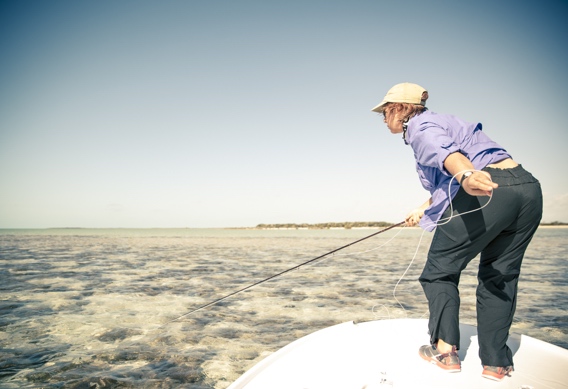
When stripping flies for bonefish, it’s crucial to stay in contact with your fly at all times. Doing so allows you to feel the instant the fish has taking the fly, thus enabling you quickly bury the hook home with a nice long strip-set.
That’s easier said than done, however, and a common frustration we hear all the time from our anglers is, “my guide kept telling me the fish ate my fly, but I never felt it!” Sound familiar? It should, it happened to all of us.
Losing contact with the fly (and thus, the fish) can happen from a number of reasons – Too much slack in the line, an improper strip length for the speed at which the boat is traveling, stripping with the rod tip pointed up in the air, etc.
However, according to Andros South guide, Josie Sands, a common mistake made by anglers, causing them not to feel when the fish has taken the fly, is stripping at the same speed from start to finish. According to Josie, if the fish eats the fly while traveling at the same speed as your strip, there’s a good chance you’re not going to feel the weight of the fish before it has time to spit out the fly. Makes sense, right?
Instead, Josie recommends stripping the fly with smooth acceleration, starting slow and finishing slightly faster. Think of a smooth strip finishing with a soft flick of the wrist. Doing so not only enhances the action of the fly but also allows the fly to track at a different speed throughout the length of the strip, enabling you to feel the weight of the fish, regardless of how fast or slow it’s moving when it takes the fly.
Keep in mind we’re not talking about ‘jerking’ the fly line as you would when stripping for trout. Rather, the acceleration is very subtle, but once perfected, will help you stay tight to your fly, and hopefully stick more fish.
Leave a Reply